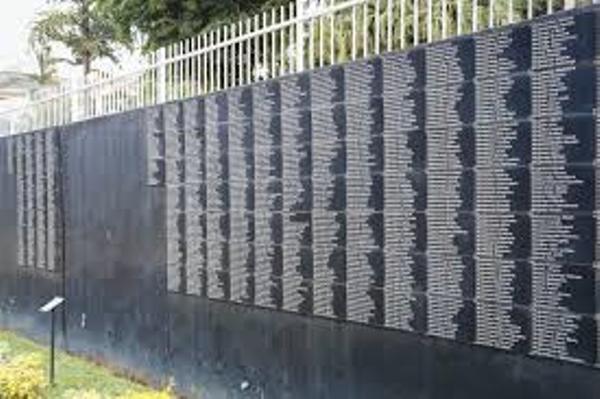
Kigali: The Genocide against the Tutsi in 1994 was preceded by various activities attesting its preparation since it was a long-term plan by the Government. In publication, the National Commission for the Fight against Genocide (CNLG) gives some key events that occurred in the line of planning genocide on the dates of 26th-31st January 1991-1994.
1) Radio Television Libre des Mille Collines (RTLM) called upon the Hutu to detest Belgians within UNAMIR
On 27th January 1994, RTLM aired full of hatred talk shows calling all the Hutu to unite and “fight until the last”, arguing that Belgian soldiers within UNAMIR had the plan to offer the country to the Tutsi.
These talk shows followed a meeting that brought together top leaders of MRND including its Secretary General, Joseph NZIRORERA, vice president Edouard KAREMERA, Jean-Pierre HABYARIMANA (son of president HABYARIMANA) and Robert KAJUGA who was the chairperson of the militia INTERAHAMWE at national level. This meeting adopted agenda for propaganda among INTERAHAMWE aimed to hate Belgian soldiers within UNAMIR. Orders were issued saying that INTERAHAMWE would no longer respect the orders given by Belgian soldiers within UNAMIR, and instead be ready to oppose them and do their best to incite the population to hate them.
2) Using the media to spread hatred against those they accused of being spies of RPF-Inkotanyi
The first group to be persecuted because of the Liberation War conducted by RPF-Inkotanyi, is that of Narcisse MUNYAMBARAGA. There were several allegations against them in particular attack on the security of the State. However, the government falsely accused him and his colleagues.
Munyambaraga Narcisse and his co-accused had file number RMPSE.177.PROGERAL. Their file indicates that they were prosecuted for three crimes: they were accused of being accomplices in an attack against the Republic of Rwanda, to be in intelligence with the enemy in order to support war against the Republic of Rwanda, to be linked to the plot to destroy the authority and Constitution using great terrorism and war. All these were false allegations aimed to harm them simply because they were Tutsi.
More people have suffered the worst defamation through the pro-government press.
In this sense, Imvaho No 897 of 28th January-3rd February 1991, published an article signed by Gaspard GAHINGI and Kantano HABIMANA, about the case of Narcisse Munyambaraga and his colleagues, which was entitled “Munyambaraga na bagenzi be basabiwe urwo gupfa”(“death penalty was sought against Munyambaraga and colleagues”). It is observed in this article that the accused were not give the right to defend themselves as provided for by laws. There was a purported trial, the accused were confirmed guilty before the trial and were forced to plead guilty. Even their lawyers were also considered to be traitors even though law authorizes laws the presence of lawyers who must work in fully independence.
The article sadistically added that the “1930 prison” where they were detained served them as a school for pleading. Almost immediately they were transferred the special prison of Ruhengeri, well known for the cruel and inhuman conditions of detainees, no contact between the detainees, living in a small cell without the right to go outside.
Gaspard GAHIGI and Kantano HABIMANA, concludes their article supporting the sentence given to Narcisse Munyambaraga and colleagues saying: “(…) people think that this trial was a waste of time, that they should be only be executed”.
More particularly, Gaspard Gahigi worked for the newspaper Umurwanashyaka of MRND and was member of the Central Committee of MRND at national level representing the prefecture of Byumba.
It is to note that all these journalists were notorious killers during the genocide. They had shifted from Radio Rwanda to the inflammatory RTLM.
3) Minister Ngulinzira relieved from the headship of Rwandan delegation in Peace talks
From January 31, 1993 until January 31, 1993, by decision of President Habyarimana, and under pressure from Colonel Bagosora, the former Minister for Foreign Affairs, Boniface Ngurinzira was relieved of his duties as head of delegation of representatives of the Rwanda in the peace talks. He was replaced by the Minister of Defense James GASANA. This decision was decried by the Prime Minister. At that time, the talks had to relate to the fusion of the armies, however, the extremists did not want Ngurinzira because it was an integrated person who wanted that the RPF Inkotanyi is integrated into the army, and that all the political problems are solved by negotiation. The extremist wing of Habyarimana and Bagosora were opposed to it even if Habyarimana lied saying that he wanted to negotiate.
The decision to dismiss Ngurinzira shows that Habyarimana and other extremists were unhappy with the way in which Ngurinzira conducted the talks, falsely accusing him of betraying the country, because he supported power sharing between the MRND and the opposition. The extremism of extremists of the MRND and other political parties of obedience of Hutu Power is one of the instruments which were widely used in the preparation of the genocide.
Conclusion
All these events mentioned above and others that have not been mentioned show that the government of President Habyarimana used all means to spread hatred against Tutsi and to remove all those who were opposed to divisionism and extremism ideology, and those who sought peace through the negotiated route, because they thwarted the preparation of genocide.
As we prepare the 26th commemoration of the genocide against the Tutsi, it is imperative to understand the history and its actors who continue to lie and distort it in their own interest. (End)
Kigali, January 26, 2020 By Dr BIZIMANA Jean-Damascène, Executive Secretary
